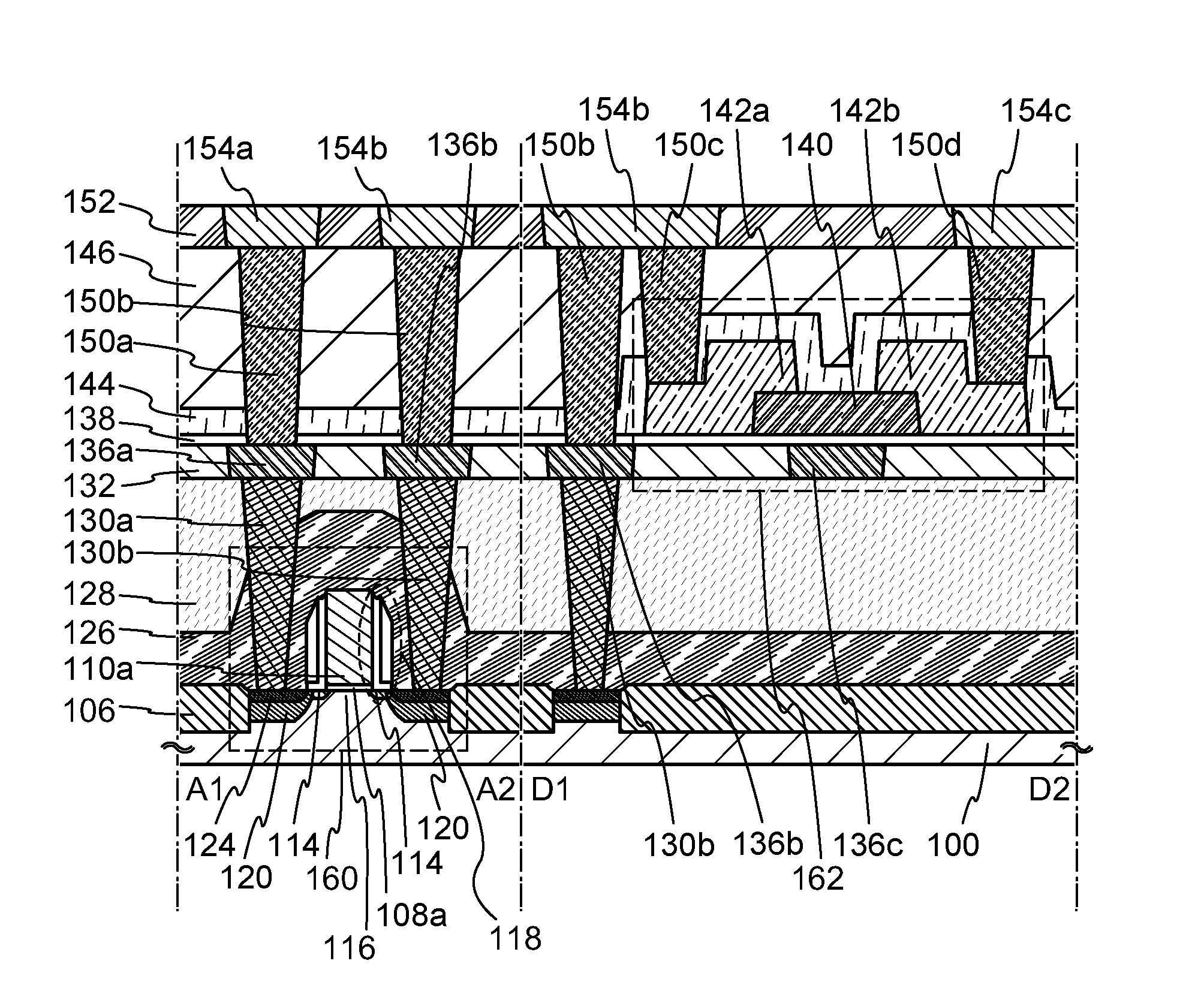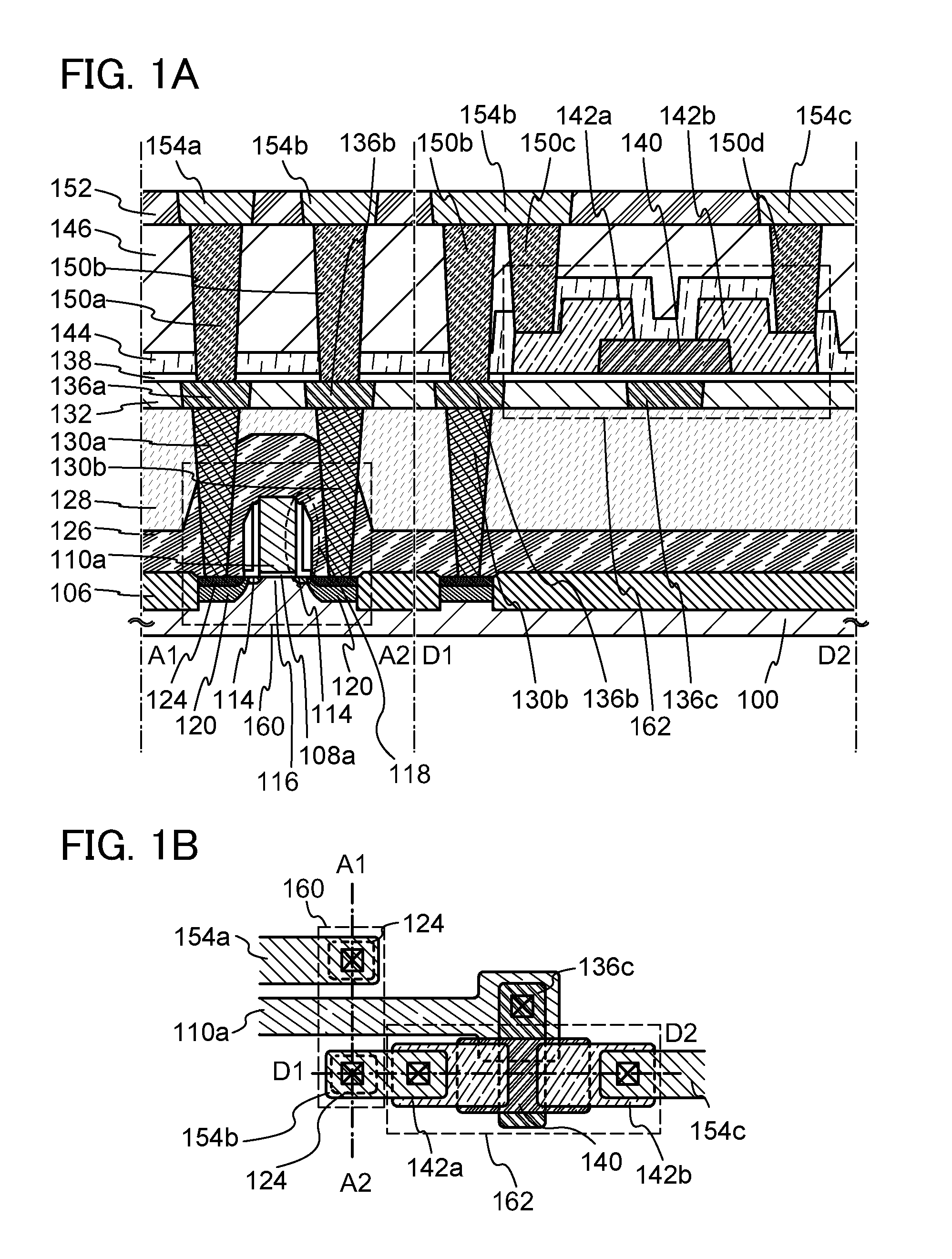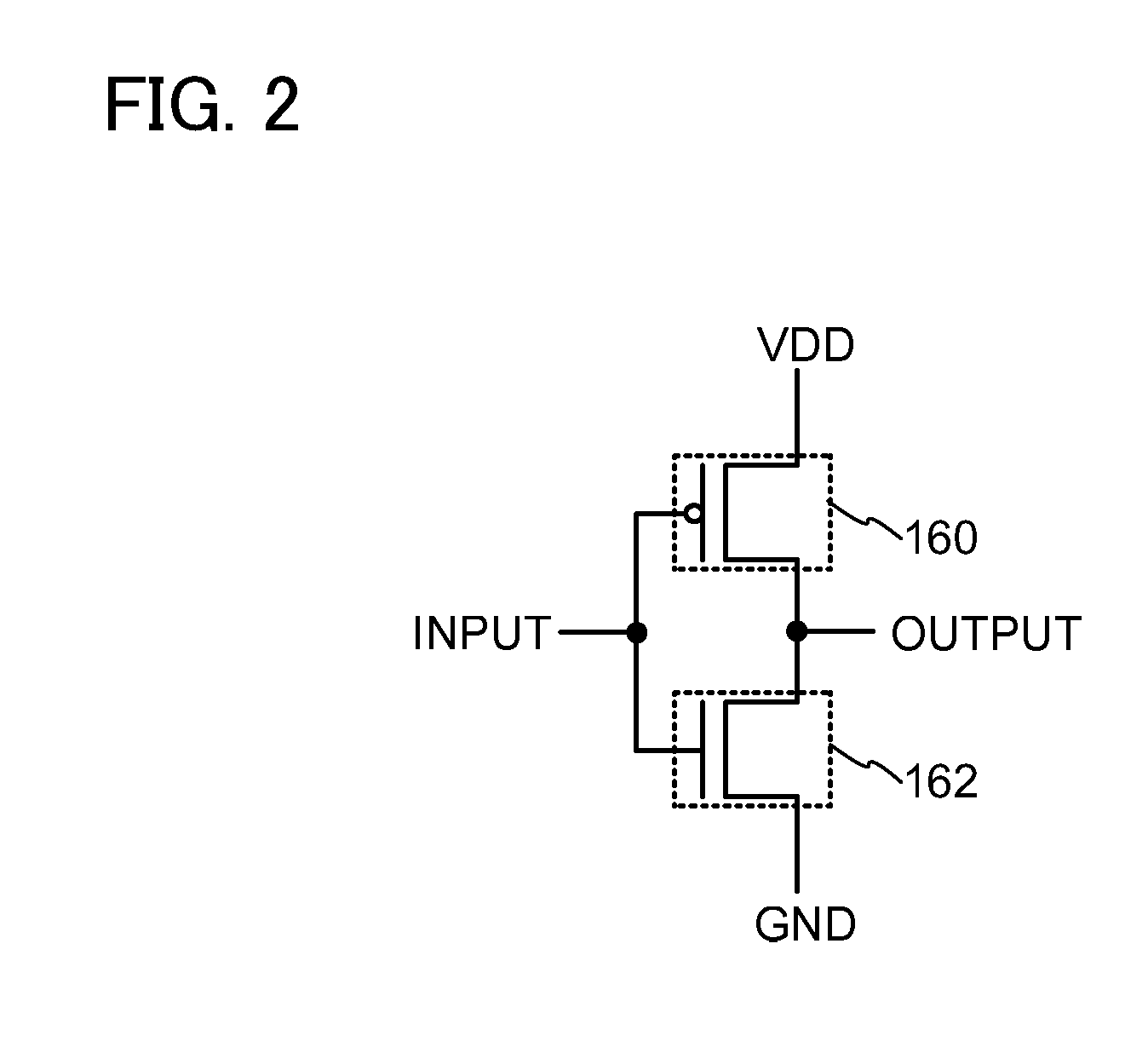Semiconductor device
- Summary
- Abstract
- Description
- Claims
- Application Information
AI Technical Summary
Benefits of technology
Problems solved by technology
Method used
Image
Examples
embodiment 1
[0039]In this embodiment, the structure and the manufacturing method of a semiconductor device according to one embodiment of the present invention will be described with reference to FIGS. 1A and 1B, FIG. 2, FIGS. 3A and 3B, FIGS. 4A to 4H, FIGS. 5A to 5G, and FIGS. 6A to 6D.
[0040]FIG. 1A shows a cross-sectional view of the semiconductor device according to this embodiment. FIG. 1B shows a plane view of the semiconductor device according to this embodiment. Here, FIG. 1A corresponds to section A1-A2 and D1-D2 shown in FIG. 1B. The semiconductor device shown in FIGS. 1A and 1B includes a p-type transistor 160 in its lower part and an n-type transistor 162 using an oxide semiconductor in its upper part.
[0041]The p-type transistor 160 includes a channel formation region 116 in a substrate 100 containing a semiconductor material; impurity regions 114 and heavily doped regions 120, a combination of the impurity regions 114 and the heavily doped regions 120 can simply be referred to as i...
embodiment 2
[0129]In this embodiment, the structure of a semiconductor device according to another embodiment of the disclosed invention is described with reference to FIGS. 7A and 7B and FIG. 8. Note that in this embodiment, the structure of a semiconductor device which can be used as a memory element is described.
[0130]FIG. 7A shows a cross-sectional view of a semiconductor device according to this embodiment. FIG. 7B shows a plane view of the semiconductor device according to this embodiment. Here, FIG. 7A shows section E1-E2 and section F1-F2 of FIG. 7B. The semiconductor device shown in FIGS. 7A and 7B includes a transistor 260 in its lower part, which is formed using a material other than an oxide semiconductor, and a transistor 262 in its upper part, which is formed using an oxide semiconductor.
[0131]The transistor 260 using a material other than an oxide semiconductor includes: a channel formation region 216 in a substrate 200 containing a semiconductor material, impurity regions 214 an...
embodiment 3
[0147]In this embodiment, the structure of a semiconductor device according to another embodiment of the disclosed invention is described with reference to FIGS. 9A and 9B and FIG. 10. Note that in this embodiment, the structure of a semiconductor device which can be used as a memory element is described.
[0148]FIG. 9A shows a cross-sectional view of a semiconductor device according to this embodiment. FIG. 9B shows a plane view of the semiconductor device according to this embodiment. Here, FIG. 9A shows section G1-G2 and section H1-H2 in FIG. 9B. The semiconductor device shown in FIGS. 9A and 9B includes, in its lower part, a p-type transistor 460 and an n-type transistor 464 which are formed using a material other than an oxide semiconductor, and includes, in its upper part, a transistor 462 using an oxide semiconductor.
[0149]The p-type transistor 460 and the n-type transistor 464 which are formed using a material other than an oxide semiconductor have a similar structure to that ...
PUM
 Login to View More
Login to View More Abstract
Description
Claims
Application Information
 Login to View More
Login to View More - R&D
- Intellectual Property
- Life Sciences
- Materials
- Tech Scout
- Unparalleled Data Quality
- Higher Quality Content
- 60% Fewer Hallucinations
Browse by: Latest US Patents, China's latest patents, Technical Efficacy Thesaurus, Application Domain, Technology Topic, Popular Technical Reports.
© 2025 PatSnap. All rights reserved.Legal|Privacy policy|Modern Slavery Act Transparency Statement|Sitemap|About US| Contact US: help@patsnap.com



